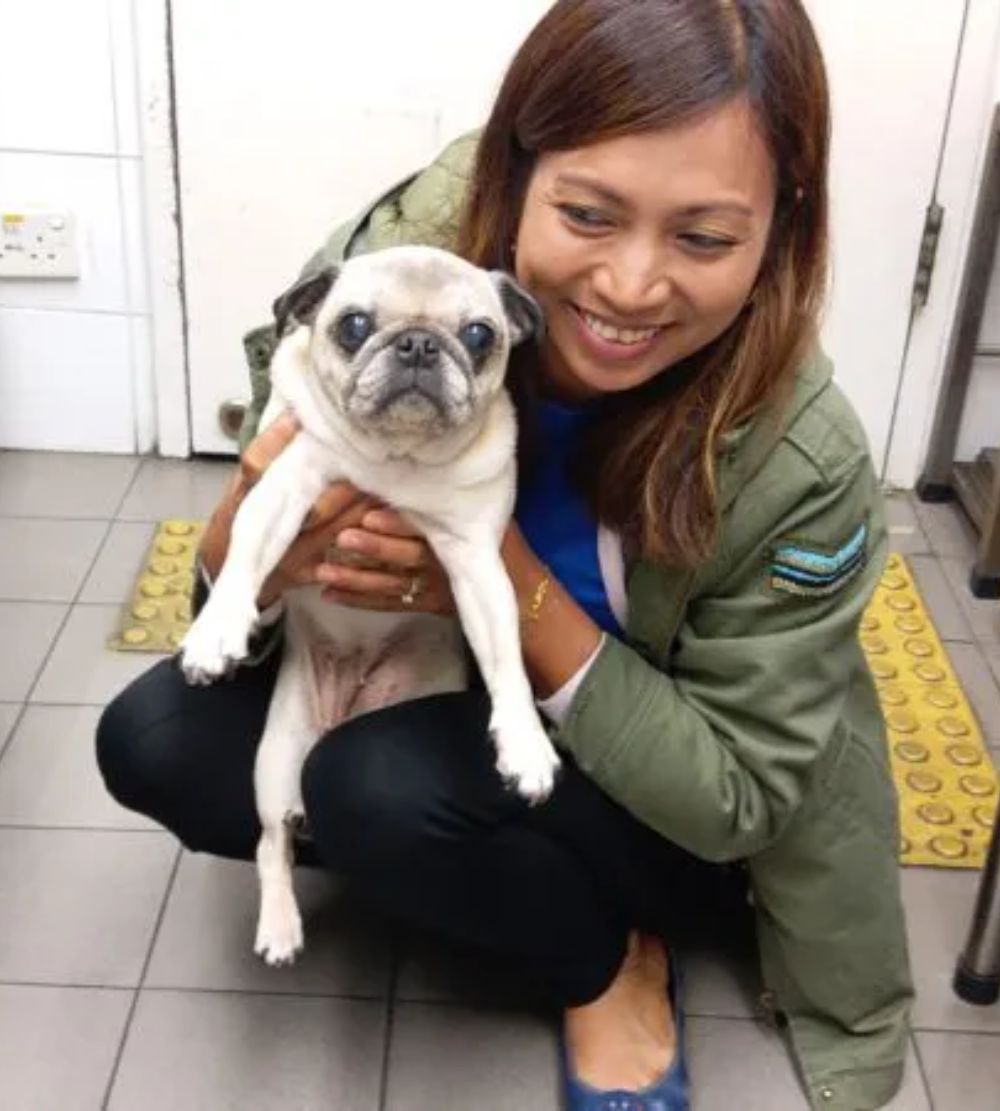When relocating from Singapore to Australia, navigating the legal processes can be daunting and confusing, especially with the abundance of conflicting information online. For pet owners, the challenge is compounded by the need to ensure their beloved pets can safely and legally accompany them. Here are the crucial steps and considerations for bringing your pet to Australia.
Whether you’re relocating for work or simply chasing the Aussie sunshine, dive in and discover how to make your pet’s journey across continents seamless, safe, and stress-free. Let’s turn the daunting task of international pet relocation into a smooth experience!
Understanding Australia’s Pet Import Regulations
Australia has strict biosecurity laws to protect its unique ecosystem from foreign diseases and pests. Therefore, importing pets involves adhering to stringent regulations. It’s essential to familiarize yourself with these rules well in advance to avoid any surprises at the last minute.
Pre-Travel Preparations
Preparing your pet for travel involves several important steps to ensure a smooth and safe journey. It’s essential to start planning well in advance to avoid any last-minute complications. Thorough preparation will not only ensure your pet’s comfort but also help you comply with all necessary regulations and requirements for international travel.
Veterinary Checks and Vaccinations
Before you even think about booking your flight, make sure your pet is up to date with all necessary vaccinations. These might include rabies, leptospirosis, and other vaccines as specified by the Australian authorities. A thorough check-up is crucial to ensure your pet is in good health for travel.
Microchipping Requirements
Microchipping involves placing a small identification chip under your pet’s skin. This chip has a unique code that can be read by authorities to access information about the owner and the pet’s health. Ensure the microchip is compatible with ISO readers. (such as Avid, Trovan, and Destron) and is ISO 11784 or ISO 11785 compliant, with at least 15 digits. Avoid microchips starting with “999” as they are not unique.
Pet Import Permit
Securing an import permit is an important requirement for bringing your pets to Australia. It is necessary to obtain an import permit well in advance to ensure that all necessary documentation and requirements are met for a seamless transition for your pet. Therefore, it is important to complete this process carefully and according to the guidelines provided by the Australian authorities.
How to Apply for an Import Permit?
To relocate your pet to Australia, you need to apply for an import permit from the Department of Agriculture, Fisheries and Forestry (DAFF). The application process involves filling out detailed forms about the pet’s health, vaccinations, and microchip number. Securing this permit well in advance of your travel date is essential for a smooth entry process for your pet.
Necessary Documentation
In the process of transporting your pet to Australia, it is important to gather and submit various documents. These include vaccination records, health certificates, and proof of microchipping. It is essential to ensure that all the information provided in these documents is accurate and up to date. Thoroughly reviewing all entries and reaching out to DAFF for clarification on any requirements can help prevent any potential delays or issues, or you can simply contact Ferndale Kennels for an enquiry.
Approved Countries and Transit
It is essential to be aware of the countries that approve pet imports and the transit regulations involved. Only pets from specific countries that meet Australia’s stringent biosecurity standards are allowed entry. Ensuring compliance with these regulations helps maintain Australia’s disease-free status and safeguards the health of local animals and people.
Direct Travel from Singapore
When bringing your pets to Australia from Singapore, you have the advantage of being allowed to do so directly as Singapore is Rabies-free, which streamlines the process and reduces complications. Australia doesn’t allow direct travel from some countries (e.g. countries like China that fall into Australia’s uncategorised group of countries), and pets from those places are not allowed to travel to Australia without spending 6 months first in a country that Australia recognizes as low rabies or no rabies (like Singapore).
Health Certificate and Blood Tests
To ensure the health and safety of your pet and the Australian environment, stringent health checks are mandatory. This includes obtaining a health certificate and completing necessary blood tests as per Australian guidelines.
Necessary Health Certificate
Your pet will need a health certificate issued by an official veterinarian. This certificate confirms that your pet is healthy and free from diseases.
Specific Blood Test is Required
Australia requires specific blood tests, such as the rabies-neutralizing antibody titer test(RNATT), to be conducted. These tests must be done within a specified timeframe before travel, so plan accordingly.
Prohibited Breeds and Restrictions
Dogs:
When importing dogs from Singapore to Australia, it’s crucial to adhere to the regulations set by the Australian government.
Banned Dog Breeds in Australia: Certain dog breeds and hybrids are prohibited from being imported into Australia due to their perceived risk to public safety or environmental concerns. It’s important to note that these restrictions apply regardless of the country of origin. The banned dog breeds in Australia include:
- Pitbull Terriers
- Japanese Tosas
- Dogo Argentino
- Fila Brasileiro and many more.
If you are considering importing a dog from Singapore to Australia, ensure that the breed does not fall under these banned categories. Breeds with a history of aggression or those listed as restricted in the Australian government’s regulations may face challenges or outright bans.
Cats:
Importing cats into Australia from Singapore also requires careful consideration of the regulations and restrictions in place.
Banned Cat Breeds in Australia: Australia prohibits the importation of certain cat breeds and hybrids for various reasons, including concerns about their impact on native wildlife or public health. The banned cat breeds include:
- Savannah cats
- Bengal cats
If you own a cat of one of these breeds and are planning to relocate from Singapore to Australia, it’s essential to be aware of these restrictions. Ensuring compliance with Australian regulations before making any decisions will help avoid complications during the importation process.
By familiarizing yourself with these regulations and restrictions for both dogs and cats, you can ensure a smoother transition for your pets when moving from Singapore to Australia.
Travel Arrangements
Choosing a Pet-Friendly Airline
Not all airlines are equipped to handle pet travel, so choose one with a good reputation for pet care. Airlines like Qantas and Singapore Airlines have pet travel programs that ensure the comfort and safety of your furry companion.
Note that DAFF (the Australian Government department) mandates that dogs and cats are required to travel to the Melbourne quarantine in the most direct way, so there are minimal airline choices as you do need to fly the pets on the most direct flight routes available. Pets cannot take a transit flight, if there is a direct route option available.
Booking Flights
When arranging your travel plans, it’s important to book your pet’s flights well in advance. Choose a route that minimizes travel time and stress for your furry friend.
Pets do need to arrive in Melbourne for quarantine as manifest cargo and cannot arrive in the cabin or as excess baggage.
Check out: Airlines that allow pets in-cabin
Crate Training Your Pet
Crate training is a crucial step in preparing your pet for travel. By gradually and positively introducing your pet to a crate, you can create a comfortable and secure space for them during the journey. A well-trained pet will be better equipped to handle the potential stress of travel, ensuring a smoother and more enjoyable experience for both you and your furry friend.
Tips for Successful Crate Training
Start crate training weeks before your departure. Use positive reinforcement to help your pet associate the crate with comfort and safety. Make sure the crate meets airline specifications and provides enough space for your pet to stand, turn around, and lie down comfortably.
Travel Day Preparations
Checklist for Travel Day
- Confirm flight details and pet travel arrangements.
- Ensure all documents are in hand.
- Provide your pet with a light meal (not within 4-5 hrs of check-in to avoid soiling the crate or travel sickness) and water.
- Make sure your pet’s crate is well identified.
Ensuring Your Pet’s Comfort
Place a familiar blanket or toy in the crate to comfort your pet during the journey. Avoid feeding them a large meal right before travel to prevent nausea.
Arrival in Australia
What to Expect at the Airport
Singapore is categorized by Australia as a group 2 country, meaning your pet will have to stay in quarantine for 10 days. Upon arrival, your pet will be taken to the quarantine facility. Australian authorities will conduct health checks to ensure compliance with import regulations.
Customs and Quarantine Procedures
Customs officers will review your pet’s documentation. Ensure all papers are readily accessible to avoid delays. If the documentation is not in the proper format, there may be significant delays and additional inspections.
During Quarantine
During the quarantine period, your pet will be monitored for any signs of disease. They will receive care and regular health checks from trained staff.
Tips for Managing Separation
It can be tough to be separated from your pet, but knowing they are in good hands helps. Don’t expect updates as it’s a Government site, no news is good news. Although they are prompt to communicate with you if they have any health concerns, don’t worry.
Post-Quarantine
Once the quarantine period is over, you’ll receive a notification to collect your pet. Ensure you have all the necessary documentation to complete the process smoothly.
Settling Into the New Environment
Once into your new home in Australia, help your pet adjust to their new home by maintaining familiar routines and providing a comfortable space. Gradual introduction to new surroundings can ease the transition.
Conclusion
Relocating your pet from Singapore to Australia involves meticulous planning and adherence to strict regulations. By following this comprehensive guide, you can ensure a smooth and stress-free transition for both you and your furry friend. Remember to start preparations early and stay informed about any updates to import regulations. Cheers to a safe journey for your furry friends, and wonderful new beginnings Down Under!
Pet Relocation Services from Singapore to AustraliaSettling into your new home in Australia can be an exciting adventure for both you and your pet. At Ferndale Pet Travel, we understand that this transition can also be overwhelming. Our comprehensive pet relocation services are designed to handle every detail, ensuring a seamless move for your furry friend. From expert guidance on navigating import regulations to providing comfort and care during travel and quarantine, our experienced team is here to make the process stress-free. Trust us to prioritize your pet’s safety and well-being every step of the way. Contact Ferndale Pet Travel today and let us help you turn the daunting task of international pet relocation into a smooth, worry-free experience. |
Frequently Asked Question
What are the requirements for bringing pets to Australia from Singapore?
To bring your pet to Australia from Singapore, you must adhere to strict biosecurity laws. This includes obtaining an import permit, ensuring microchipping with a compatible ISO chip, fulfilling vaccination and health certificate requirements, and complying with specific blood tests like the rabies-neutralizing antibody titer test (RNATT). Pets must have been born in Singapore or lived in Singapore for 180 days.
How can I apply for an import permit for my pet?
You can apply for an import permit from the Department of Agriculture, Fisheries and Forestry (DAFF) well in advance of your travel date. The application process involves submitting detailed forms about your pet's health, vaccinations, and microchip information. Ferndale can help with all this for you.
Which airlines are suitable for transporting pets from Singapore to Australia?
Choose airlines with established pet travel programs, such as Qantas or Singapore Airlines, that prioritize the safety and comfort of pets during transit. Ensure to book well in advance and confirm their specific requirements for pet travel crates and documentation.


